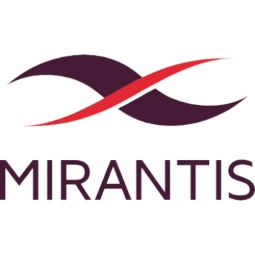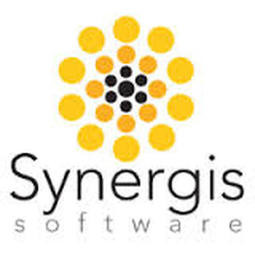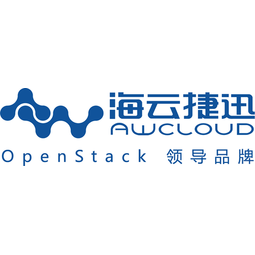Mirantis

Overview
|
HQ Location
United States
|
Year Founded
2011
|
Company Type
Private
|
Revenue
$10-100m
|
|
Employees
201 - 1,000
|
Website
|
Company Description
Mirantis helps enterprises and telcos address key challenges with running Kubernetes On-Premises with pure Open Source software. The company employs a unique build-operate-transfer delivery model to bring its flagship product, Mirantis Cloud Platform (MCP), to customers. MCP features full-stack enterprise support for Kubernetes and OpenStack and helps companies run optimized hybrid environments supporting traditional and distributed microservices-based applications in production at scale.
To date, Mirantis has helped more than 200 enterprises and service providers build and operate some of the largest open clouds in the world. Its customers include iconic brands such as Adobe, Comcast, Reliance Jio, State Farm, STC, Vodafone, Volkswagen, and Wells Fargo.
To date, Mirantis has helped more than 200 enterprises and service providers build and operate some of the largest open clouds in the world. Its customers include iconic brands such as Adobe, Comcast, Reliance Jio, State Farm, STC, Vodafone, Volkswagen, and Wells Fargo.
Key Customers
Volkswagen, Apple, DIRECTV, Adobe, Jio, Telstra, Ericsson, inspur
IoT Snapshot
Mirantis is a provider of Industrial IoT cloud planning, design and implementation services, and training services.
Technology Stack
Mirantis’s Technology Stack maps Mirantis’s participation in the IoT Technology stack.
-
Devices Layer
-
Edge Layer
-
Cloud Layer
-
Application Layer
-
Supporting Technologies
Technological Capability:
None
Minor
Moderate
Strong

Supplier missing?
Start adding your own!
Register with your work email and create a new supplier profile for your business.
Case Studies.
Case Study
With OpenStack, Telstra reduces provisioning time from weeks to seconds
Telstra, a leading telecommunications and technology company, was facing challenges in dynamically allocating bandwidth to efficiently provide the exact network resources required by every user at any given time. This was critical to minimize latency in applications with large volumes of fast-moving data and to maintain high end-to-end performance in bandwidth-intensive applications, such as video, gaming and other multimedia. The rapid growth of cloud computing was putting tremendous pressure on the company to ensure reliable, high-performance networking services despite heavier traffic patterns and greater strain on network bandwidth for distributed computing operations. The company's PEN group had historically built out infrastructure that made provisioning a circuit for customers a multiweek process that included manually setting up switches, routers and other equipment. Customers were becoming more savvy and demanded more speed — in tasks ranging from provisioning circuits to allocating bandwidth.
Case Study
Tata Communications’ OpenStack-based Managed Private Cloud Enables Digital Transformation of the Global Enterprise
Global organizations increasingly rely on technology to innovate and beat the competition. Business executives have an insatiable demand for SaaS applications and E-commerce teams depend on big data analytics. Finance and engineering require dynamically scaling systems and sales mandates mobile and secure access. New workloads, however, must integrate with legacy systems. Thus, IT needs solutions to connect old deployments with new ones, public with private, and physical with virtual. Furthermore, these integrations must not lead to a loss of control, such as systems use without IT oversight, which could result in increased security or compliance risk.
Case Study
Shenzhen Stock Exchange Builds Innovative Industry Cloud to Meet Explosive Demand for High Performance Systems
The Shenzhen Stock Exchange (SZSE), China's second-largest exchange, was experiencing rapid growth, processing millions of trades each day for its 1700 listed companies. However, the existing IT systems were not meeting the computational needs of fund managers. Traditional client-server technology began to fall short of performance requirements and lacked the flexibility to accommodate fast-moving industry developments. To thrive, fund managers needed new systems that were scalable, centralized, and not locked into specific vendors or architectures. The new systems also needed to be high-performing, elastic, open, and secure to meet the stringent regulations of the China Securities Regulatory Commission (CSRC).
Case Study
Largest Middle East and North Africa Telecom Provider Builds Innovative Public OpenStack Cloud to Accommodate Expanding Market Demand
To maintain leadership and sustain enterprise business growth, STC must continuously increase the value offered to customers and improve IT operations. While recent increases of colocation services from five data centers fueled expansion, STC customers still demand new and differentiated services. STC crafted a strategy to market third-party PaaS and SaaS solutions hosted on a comprehensive STC IaaS platform, and began to recruit cloud partners. Pursuing this ecosystem-based strategy, however, required carrier grade availability, performance, scalability, and security while maintaining a cost structure that permits market leading price points.
Case Study
Volkswagen Group Deploys Mirantis OpenStack Cloud to Drive IT Agility and Business Innovation
Volkswagen Group, the world’s second largest automaker, was facing a challenge with its IT environment which had become decentralized and heterogonous due to its recent growth. Brands, divisions, and advanced initiatives operate on different IT platforms which requires costly investment in hundreds of technologies and development tools. The company's heterogeneous IT platforms included specialized hardware, often with long procurement cycles, and required significant manual work to provision new resources. Furthermore, expensive storage solutions were being consumed by applications that doubled in their capacity requirements every two years. The company needed to unify and automate work streams and platforms across the entire Volkswagen Group. New standardized infrastructure would need to replace existing developer systems yet still connect to legacy applications that maintain important data.
Case Study
Japanese Telecom Deploys Hybrid Kubernetes and OpenStack Cloud to Enable Containers in the Enterprise
The operator, a leading telecommunications company based in Japan, was looking to offer Kubernetes to enterprise customers interested in running cloud-native applications. They wanted to deploy Kubernetes as part of a hybrid environment that would give clients the flexibility of accessing VMs, containers or baremetal instances as needed. The operator was also interested in creating internal business applications with microservices and needed to provide containers to internal development teams. One of the benefits they saw in Kubernetes was the ability to reduce hypervisor overhead by running containers on baremetal. The operator was using legacy VMware based virtualization infrastructure, which required not only significant hypervisor resources, but also a lot of effort to operate and troubleshoot, not to mention downtime from periodic version upgrades.
Case Study
Industry Giant Quickly Transforms Storage Service With Powerful, Flexible OpenStack Management Layer
EMC Corporation, a leader in foundational technologies for data storage, management, protection, and analysis, was facing challenges with its cloud management layer. The company's massively scalable storage service required a powerful management layer to provision, monitor, and manage cloud resources and transactions. However, the initial management layer's manual processes were demanding excessive staff resources due to recent customer growth. The company needed a new cloud management solution that could handle high availability, performance, and scalability. The solution also needed to be easy-to-use and highly secure. In addition, the new management layer would also be the foundation for two additional cloud services: public compute as a service coupled with the object storage service, and private cloud compute resources for EMC’s internal software development staff.
Case Study
European Banking Leader Deploys OpenStack Private Cloud to Speed Product Introduction and Reduce Costs
The bank, one of the 20 largest regional banks in the world, was facing new competition from non-traditional banks with flexible infrastructure and agile development. Despite recent IT systems centralization of all regional subsidiaries onto a single platform, and reliability improvements, the bank’s leaders called for faster application development and innovation. Each application required a unique development and testing environment, making the bank’s infrastructure complex and diverse. The bank’s engineers had to wait days or weeks for new systems to be provisioned, during which time, provisioning visibility remained low. Once deployed, engineers and IT had poor visibility of platform utilization. These inefficiencies drove new server purchases to 500 units per year, constraining other IT investment. The bank needed a new environment to minimize the time and effort it took to build platforms, ideally with self-service and visibility for developers.
Case Study
G-Core’s Global OpenStack Infrastructure Speeds Wargaming’s Time-to-Market and Reduces Massive Multiplayer Game Deployment Costs
G-Core, a company that provides infrastructure for online multiplayer games, was facing challenges due to its tremendous growth. The fast-paced gaming market required clients to continuously improve games and quickly launch new features, and G-Core needed to make sure they were in a position to do that. However, G-Core struggled to cost-effectively maintain infrastructure performance and scale. Its game hosting spanned thousands of servers in 20 data centers and had even set a world record of 1,140,000 peak concurrent users. As platform expenses rose, G-Core needed improved resource utilization and cost margins. Furthermore, to shorten release cycles, gaming developers required self-service access to resources. Provisioning VM and bare metal servers, however, often involved release managers opening multiple tickets that took many days and administrators to resolve. The activity was complex, labor-intensive, and subject to human error. To help make Wargaming successful, G-Core had to help simplify the process of maintaining continuous integration and deployment of high-quality games.
Case Study
Hollywood Giant Drives Media Innovation and Lowers Cost with OpenStack Private Cloud
The company faced a unique IT challenge due to the massive size and intermittent needs of video post-production workloads. Media coloring, rendering, and transcoding for movies required compute and storage resources that spiked to enormous levels at irregular intervals. An increase in new server requests to meet peak utilization placed substantial strain on existing IT resources. The company needed to improve innovation, decrease time-to-market, and cut capital costs. Massive file storage needs for animation and high definition video was projected at 100X growth over 10 years. This growth could not be serviced by the current architecture. Without migrating to a centralized and shared private cloud, infrastructure costs would multiply.
Case Study
Leading Dutch Biodiversity Institute Transforms Scientific Computing, Welcomes Third Party Research Collaboration
Over the last few years, the Naturalis Biodiversity Center has expanded to meet the growing needs of the scientific community. To better serve the community, the Center combined previously separate organizations, including a thriving natural history museum, and quickly became a 700-person entity, with 100 resident scientists, 200 guest researchers, and an IT staff of 35 to support these professionals. Additionally, a 30 million Euro grant from the Dutch Economic Structure Enhancement Fund allowed expansion of state-of-the-art laboratories and research collaboration, and the initiation of one of the world’s largest projects for natural history digitization to date. Concurrently, DNA sequencing, 3D, and GIS technologies led to the proliferation of scientists’ data sets. Combined with the trend to analyze relationships between species, the Center required more scalable and powerful compute resources. By the end of 2013, the Center’s IT department had consolidated resources and was ready to address its systems’ constraints to support the next phase of organizational growth.
Case Study
European Media Giant Taps OpenStack-AWS Hybrid Cloud to Reduce Time to Market, Improve Security and Lower Costs
ProSiebenSat.1 Group, a leading European TV broadcasting, digital content, and e-commerce company, faced challenges due to its decentralized structure. Each of its more than 20 business units and subsidiaries had a tailored approach to software development and platforms, leading to varied IT environments. This structure, while allowing teams to drive innovation and growth, also resulted in similar IT challenges across the board. Fast-paced markets required rapid and creative content development, and competitive forces yielded cost and data protection pressure. Provisioning of new servers often took days and hindered business agility. Some teams turned to Amazon Web Services (AWS) to speed up time-to-market, but not all production applications were best suited for the public cloud deployments. Other divisions migrated to VMware-based virtualized server environments, and a few maintained bare metal and legacy compute environments. Emerging development teams leveraged LAMP stacks, node.js, and MongoDB. But with this varied approach, not all teams had adopted the latest IT best practices such as continuous integration and deployment (CI/CD) and breaking IT silos. More recently, data protection risks caught the attention of ProSiebenSat.1 business leaders, most notably those using public cloud services. The company embraced strong data protection policies, but reliance on U.S. cloud providers brought security concerns.
Case Study
Leading Credit Card Company Taps OpenStack to Speed Time-to-Market and Lower Platform Costs
The technology-driven business unit of a leading credit card company was flourishing in its early years, successfully reaching consumers with no previous access to traditional banking services. However, as the prepaid debit card expanded and added online and mobile features, the division became increasingly reliant on internally developed software applications and on-premise infrastructure. By early 2014, the platform infrastructure to support the mobile and web-centric business spanned multiple data centers and technologies. Advanced server, storage, and networking solutions adequately supported application growth, however, complex processes to provision and manage infrastructure began to constrain developer agility and slow release cycles. A principal concern was the two-week period to provision software development platforms. A second challenge was the deviation of environments between development, test, and production systems. Lastly, infrastructure capital and operating expenses continued to grow.
Case Study
Digital Broadcaster Embraces OpenStack Innovation to Build Rapidly Scalable Infrastructure and Improve Services Time-to- Market
The company’s engineering teams build infrastructure and applications that allow the business to deliver market leading digital content to TVs, PCs, and mobile devices. This requires systems that rapidly scale, speed time-to-market, and protect valued intellectual property; all without exceeding target costs. Agile and immediate expansion of infrastructure is especially important for comprehensive sports offerings. “Demand spikes during important events can place a huge strain on our systems,” says the company’s Director of Cloud Solutions. “To respond to large-scale online requests, we often need immediate and sizable increases in application capacity.” Equally important to business success is enabling rapid development and deployment of new customer services. Continuous integration and deployment, now replacing waterfall programming methods, require elastic system architectures that allow for quick provisioning and deprovisioning of infrastructure based on developer needs. In addition to scalability and speed of development, new systems require strong protection of intellectual property to prevent cyber attacks. This means integration with existing robust security solutions. New infrastructure must also integrate with existing network and storage frameworks, and accommodate software development processes with minimal impact on efficiency.
Case Study
With OpenStack, Leading Asia Pacific Telecom Reduces Provisioning Time from Weeks to Seconds
The company, a leading telecommunications and technology company based in the Asia Pacific region, was facing challenges in dynamically allocating bandwidth to efficiently provide the exact network resources required by every user at any given time. This was critical to minimize latency in applications with large volumes of fast-moving data and to maintain high end-to-end performance in bandwidth-intensive applications, such as video, gaming and other multimedia. The rapid growth of cloud computing was putting tremendous pressure on carriers and enterprises to ensure reliable, high-performance networking services despite heavier traffic patterns and greater strain on network bandwidth for distributed computing operations. The company's infrastructure made provisioning a circuit for customers a multiweek process that included manually setting up switches, routers and other equipment.
Case Study
China’s Retail Giant Unveils Massively Scalable, OpenStack-Based E-commerce and IaaS Platform
Bailian Group, China's largest retailer, faced the challenge of transforming its business model from traditional brick and mortar to omni-channel business to keep up with the rapid growth of online commerce in China. The company's existing IT infrastructure was complex and not conducive to the fast-paced innovation required in the e-commerce sector. Low server utilization, long provisioning times, and high operating costs were impeding the company's growth in the omnichannel sales sector. The company needed a large-scale IT platform that would enable innovation and growth, with fast development, dynamic scaling, uncompromised availability, and low cost of operations.
Case Study
U.S. Satellite Operator Breaks New Ground in the Cloud with Live and On-Demand OTT Offering
The satellite operator was facing a challenge with the increasing number of cord-cutters and cord-nevers, people who have never subscribed to a traditional pay-TV service. The operator wanted to capitalize on this situation and address the more than 100 million payTV households by launching a monthly OTT subscription service that includes live and on-demand content. The operator had an aggressive timeline for its new service launch. The goal was to get the project off the ground within weeks. Video quality was an important consideration, and there needed to be very low latency. Moreover, the operator wanted to be able to offer its OTT service to subscribers at a much lower price point than a full satellite service in the U.S. Given these parameters, Mirantis and Harmonic partnered to deliver a cloud-native media processing solution on OpenStack that met these requirements, offering quick time to market, high video quality and little to no CAPEX.
Similar Suppliers.

Supplier
Synergis Software
Synergy between your people, processes and information are the foundation to your organization’s success. Synergis Software develops document management and workflow solutions that enable you to effectively leverage business and design content across the enterprise to drive growth, mitigate risk and gain competitive advantage. We help you find, manage, share and control documents and related information throughout their lifecycle, securing your critical information assets and automating your business processes.

Supplier
Harrington Group International
Harrington Group International (HGI) has a history of strong focus on quality and has developed a comprehensive set of management and technical processes based on ISO 9001:2008. The consistency achieved through the application of these processes provides the foundation for predictable performance and our reputation for delivering high quality products, on-time and within budget.

Supplier
SmartFactory
At SmartFactory, they help identify hidden losses, thus reducing planned and unplanned downtime, increasing productivity and maximising efficiency. Their Smart Factory solutions reduce the amount of resources required to gather and communicate critical information across an organisation and dynamically translate this data into actionable intelligence. Their own solutions are complemented by the industry proven technology of their hardware partners Siemens and TurckBanner.

Supplier
AWcloud
Based in Beijing Zhongguancun high-tech park, AWcloud is the leading provider of enterprise OpenStack-powered IaaS for public, private and hybrid cloud solutions in China. Their founding team brought decades of experience developing, building and operating large-scale cloud infrastructure deployments. The core team has a unique array of technical expertise in virtualization, Cloud Computing, infrastructure services and holds an excellent reputation among their customers.

Supplier
SYNTAX
Syntax has been providing comprehensive technology solutions to businesses of all sizes throughout North America. Syntax delivers the best combination of software, infrastructure, and cloud solutions to meet the needs of its diverse range of customers. Syntax partners include Oracle, IBM and other world-class technology leaders. Founded in 1972.







